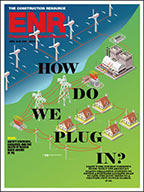Construction Industry Adds 5,000 Jobs Nationally in April
After years of declines, the construction industry finally added jobs � 5,000 of them � in April, while the industry�s unemployment rate declined slightly to 17.8%, according to an analysis of new federal employment data released this week by the Associated General Contractors of America.
“The construction industry may have stopped bleeding jobs, but there is no sign that employment levels are set to bounce back,” says Ken Simonson, the association’s chief economist. “With declines in public sector investments likely to offset increases in some private sector construction activity, we are unlikely to see significant increases in construction employment for the foreseeable future.”
The construction economist says the nonresidential construction sectors added 10,000 jobs in April, while the residential sector lost 5,400 jobs. The largest gains came from the heavy and civil engineering construction, likely reflecting the start of construction on a number of stimulus and other publicly funded projects that halted during the winter. Meanwhile, employment declined in both the nonresidential specialty trade contractors and the nonresidential building categories, possibly reflecting weak demand for office, retail and school construction.
Association officials said that construction employment is likely to remain relatively stagnant through much of 2011 as federal, state and local governments cut investments in infrastructure and other construction projects. They said that expected increases in multifamily, manufacturing and power construction would help offset the public sector declines, but might not be enough to lead to significant increases in construction employment.
Meanwhile, Simonson also released data on construction spending, which bounced back from an 11-year low in March, increasing by 1.4% to a total seasonally adjusted annual rate of $769 billion. The Census Bureau data shows that total construction spending remains 6.7% lower than a year ago and 37% lower than the March 2006 peak.
Spending on lodging increased the most in March, up 6.1% for the month while down -31% for the year, followed by manufacturing (5.2% for the month, -28% for the year) and health care (2.4% for the month, -3.2% for the year). Simonson points out, however, that spending on only two of the 10 largest nonresidential categories was higher in March 2011 than in March 2010: highways and streets, up 0.6% for the month and 4.9% over 12 months; and power construction, up 1.8% for the month and 3.9% over 12 months.
Simonson predicts that spending on certain private construction sectors was likely to increase over the coming months, but that publicly-funded construction activity was likely to decline. “I expect we’ll see improvements in the next few months in manufacturing, warehouse, hospital and data-center construction, but these gains may not offset declines in school and other public construction,” he says.


